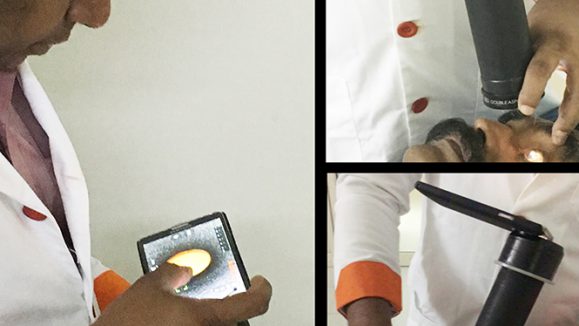Retinal degenerative disorders such as age-related macular degeneration (AMD) and hereditary retinal degeneration remain the common causes of irreversible vision loss. Research focusing on identifying the dramatic changes in the retinal composition and function, and on possible treatment strategies, have identified stem cells as potential candidates for effective therapy. An early phase (preliminary phase 1) clinical study conducted in collaboration with researchers from University of California in 2014, for instance, explored the use of intravitreal administration of autologous adult stem cells derived from human bone marrow as a promising therapeutic avenue to treat progression of retinal degeneration. The possibility of using autologous human stem cells for the clinical treatment of human retinal degeneration would open up a safer and easier administration of the treatment, as no systemic immunosuppression or retinal surgery would then be necessary.
A recent study published in Investigative Ophthalmology and Visual Science by the group of Susanna Soon-Chun Park, M.D., Ph.D., professor and Director, Vitreo-Retinal Fellowship, University of California Davis Eye Center, focuses on the application of human bone marrow derived CD34+ hematopoietic stem cell population with intravitreal injection technique to detect cellular and molecular changes within the retina of mice undergoing hereditary retinal degeneration. A commonly used murine model of hereditary retinal degeneration, rd1, was utilized, and effects of intravitreal injection of isolated CD34+ stem cells after 1 week or 4 weeks were monitored with histochemical, molecular, and functional testing.
Histochemical imaging of the injected eyes showed the presence of inserted EGFP-labeled CD34+ stem cells in all the eyes receiving the injection. “A closer analysis showed that the injected stem cells could be found incorporated into the retinal surface, creating detectable focal retinal surface irregularities on the treated eyes,” the investigators emphasized. Furthermore, some mildly hyper-reflective deposits were observed within the inner retinal layers, suggesting intra-retinal incorporation of the stem cells into those layers as well. Four weeks after the injection, the images of the treated eyes showed no difference in labeled CD34+ stem cells and their location compared to the results from week. However, a diffuse loss of the outer retina was noted, indicating the progression of the retinal degeneration despite the application of the stem cell therapy. Furthermore, no functional effect on the treated eyes was detected under a variety of scotopic and photopic testing conditions with electroretinography (ERG) testing.
Despite the virtually flat signal recordings on the functional testing, the authors emphasize that the molecular analysis of the eyes treated with CD34+ stem cells revealed dramatic changes in the gene expression, hinting that introduction of the stem cells into the degenerating eyes induced a potential trophic regenerative effect on the degenerating photoreceptors. Microarray analysis on the expressed RNA in the treated retinas identified 332 genes that demonstrated significant (higher than 1.5) fold change in expression. The top canonical pathway affected was identified to be the photo-transduction pathway, with a top affected regulator CRX which has a known role in the development and maintenance of photoreceptors.
Another affected upstream regulator identified was NR2EB which is important for photoreceptor development, and has been implicated in inherited retinal dystrophies. These changes in the gene expression pattern upon intravitreal injection of the CD34+ stem cells highlights the paracrine trophic effects taking place, and signify the CD34+ cells an attractive candidate for retinal development therapy, despite the drawbacks of no observed functional improvements during this study.
Further research into the time-window of effective therapy, as well as into other less progressive models of retinal degeneration could reveal important aspects to consider in future clinical studies towards an effective retinal regeneration therapy with autologous bone marrow derived stem cells.
Reference:
Moisseiev E, Smit-McBride Z, Oltjen S, et al. Intravitreal Administration of Human Bone Marrow CD34+ Stem Cells in a Murine Model of Retinal Degeneration. Invest Ophthalmol Vis Sci. 2016;57(10):4125-4135.




